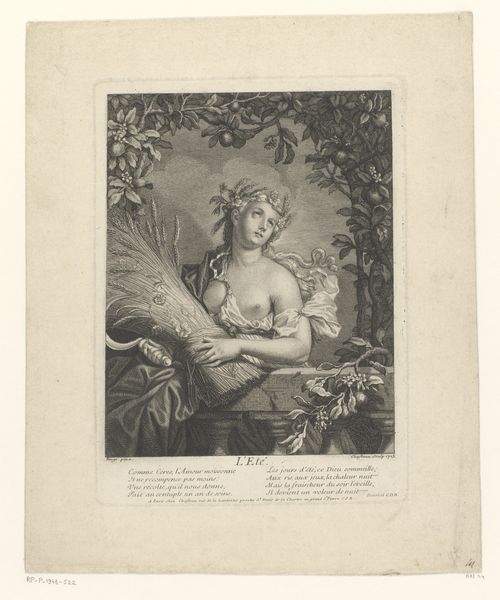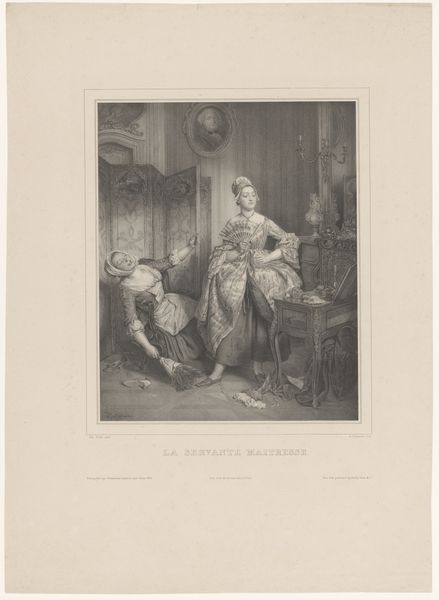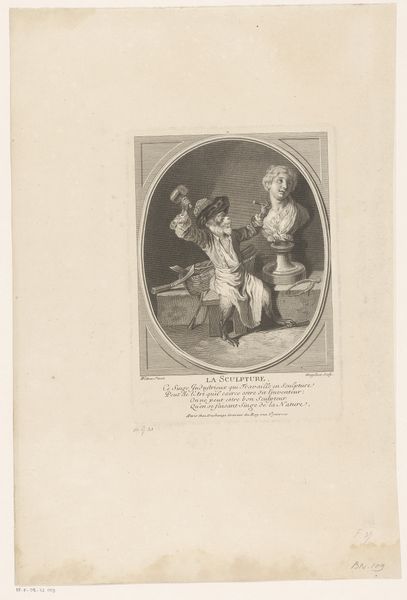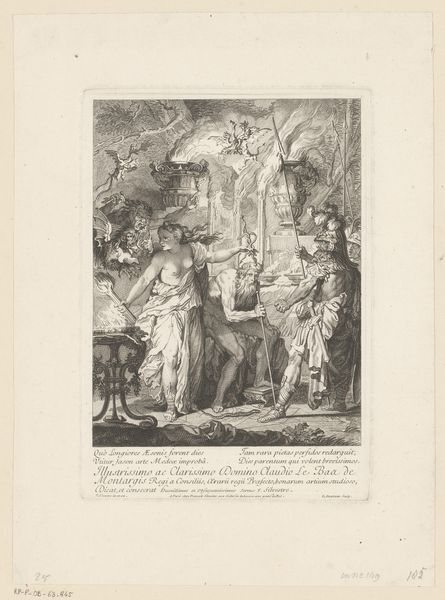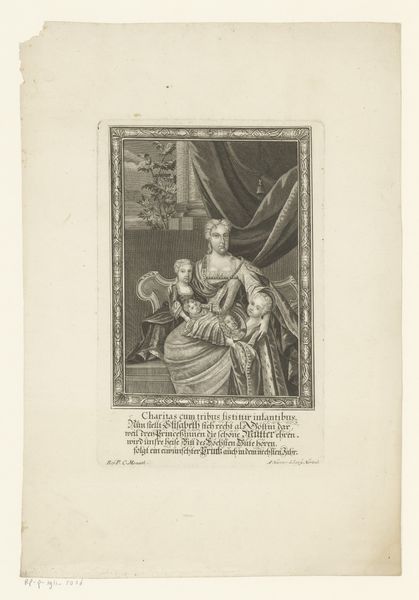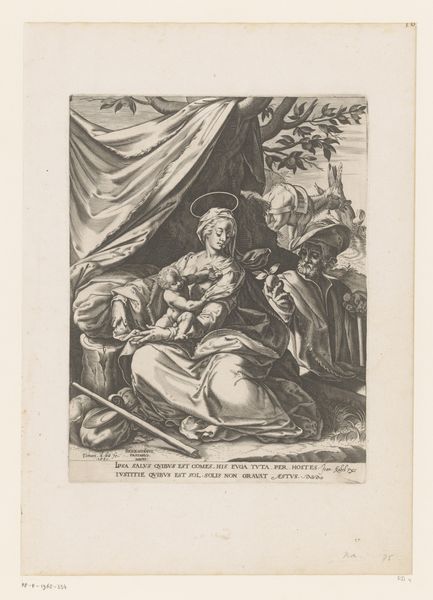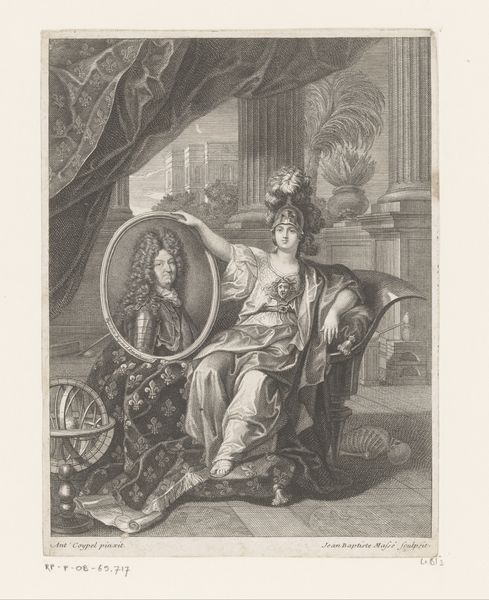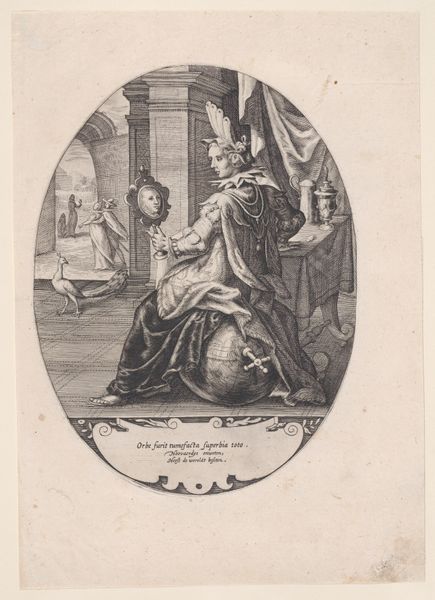
print, engraving
#
portrait
#
allegory
#
baroque
# print
#
old engraving style
#
genre-painting
#
engraving
Dimensions: height 470 mm, width 349 mm
Copyright: Rijks Museum: Open Domain
Curator: Here we have an engraving dating, quite broadly, from between 1694 and 1738, which means it exists within a timeframe dominated by Louis XIV and its immediate aftermath. Its creator is Michel Dossier. It's titled "Anne Varice de Vallière als Pomona." Editor: It strikes me as surprisingly domestic, given the theatrical title. A woman sits in what seems like a garden, rather passively. The overall tone is quite subdued, not what I'd immediately associate with Baroque. Curator: True, the composition contains both portrait and genre elements. The female figure is rendered as the Roman goddess Pomona, but within what seems to be an ordinary contemporary setting, suggesting a link between aristocratic life and mythological grandeur. This wasn't uncommon; allegory functioned to elevate the sitter. Editor: That’s fascinating! So, Madame de Vallière, perhaps a royal mistress? The garden and the aging, possibly lecherous-looking figure to the side–likely representing Vertumnus–feel symbolic of both luxury and vulnerability. Does the imagery suggest anything about courtly love and its inherent precarity? Curator: I think you are right to pinpoint that dichotomy; it speaks to the wider anxieties of status, reputation and appearance at the time. These portraits were, after all, intensely political objects which not only showcased one’s position but made a statement. Also, prints like these circulated widely, shaping public perception beyond the inner circle of the court. It speaks to how the monarchy tried to manage perceptions, offering ideals for a complex society to contemplate and, quite often, emulate. Editor: So much to consider from a seemingly simple engraving! I now appreciate how carefully constructed and potent these images could be in their day. Curator: Absolutely. The symbolic weight and societal purpose these engravings carried cannot be understated; Dossier's print offers a fascinating intersection of mythology, portraiture, and the dynamics of power during the late Baroque era.
Comments
No comments
Be the first to comment and join the conversation on the ultimate creative platform.

